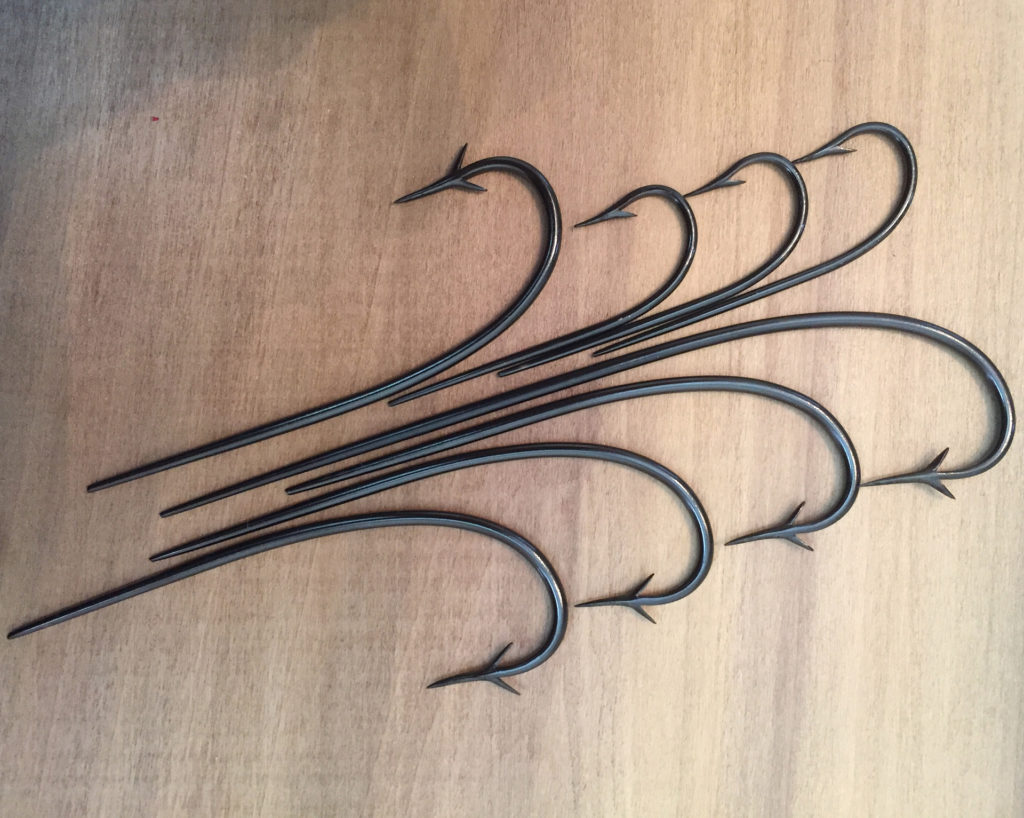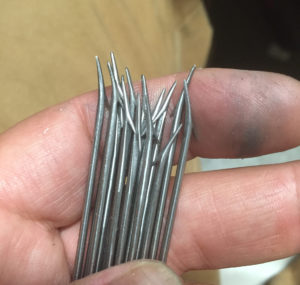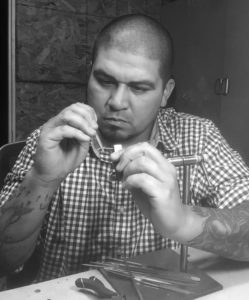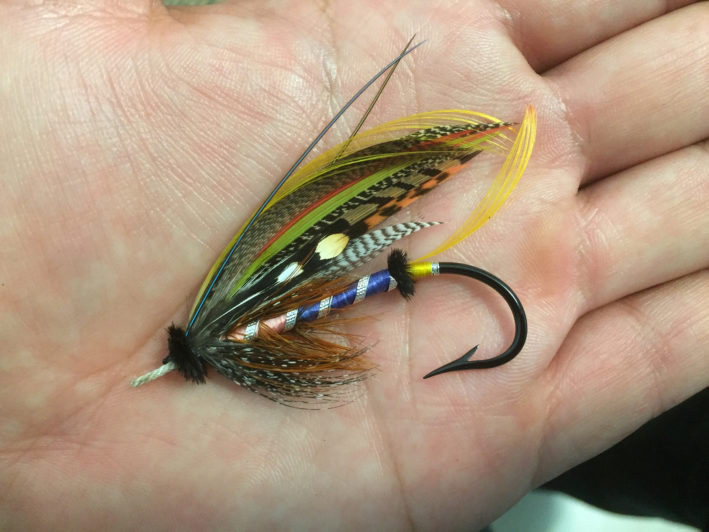Profile
The Point
Matt Arciaga’s Hook Obsession
The magnificence of the Eastern Sierras can never be truly conveyed. The valleys enchant you to follow them to their end, the mountains taunt you from the valley floor and the rivers whisper trouty secrets into your ear. This is where you will find Matt Arciaga, one of the world’s most sought-after hook makers. But before Arciaga became one of a handful of people to hand make the hooks usually designed for full-dress salmon flies, he was just one of the many hypnotized by the Sierras. After ditching his spin rod in 2013, he discovered the area’s flyfishing. He became obsessed with flies—their materials and their irresistible allure—then, finally, the hook.

Flies carry a precise and an intricate beauty thanks to the sensual materials that come from similar awe-inspiring environments as the fish they catch. Their intricacies, however, are forgotten when they float through the current. The pattern is nothing without a hook, the hook naked without a pattern. But that hook—that hook must hold.

For Arciaga the thrill of the catch fell into the distance as he became more entranced with the patterns. Everything else set into the Sierras, “The desire to dress a salmon fly outweighed most all the desire to fish or really do anything else related to fishing at all,” he says.
Steelhead flies caught his attention first and he quickly began work on the classic salmon fly patterns—ties that seem more like art than tools for catching fish—teaching himself just as he taught himself to cast. “I began with some of the most difficult dressings out there. I wanted to challenge myself and learn as much as I could, fast.” It quickly became an obsession and one he tried to do with the purest habits. Matt often held the hook in his hand while he tied the pattern, or if he used a vice he created one. Everything was handmade, from scratch—the obsession grew deeper.
Obsession is no understatement. He began fishing in 2013, started tying flies soon after and now, three years later, he is one of the planet’s greatest hook makers. Thousands of hours were spent behind the bench or at his forge while his rods collected dust, but that isolation and time has made him one of the best. “There are many who say I come off as puffy, full of myself, arrogant or just an asshole. I can say without a doubt that I am all of these things,” he laughs.

A Treatyse of Fishing with an Angle by Dame Juliana Berners explains how every article of an angler’s kit should be made by the angler and intimately known, including the hooks. Matt’s tying set-up became more intimate as time went one, but really what pushed Matt into making his own hooks wasn’t a purist point of view but rather a necessity. “I was really tired of paying decent money for what was, in my opinion, substandard hooks.” He simply thought he could do better. “I researched metal properties, heat treatment, different steels for barb-cutting chisels, tested, failed, tested again and failed.” Another arduous process began.
Still nestled in the Eastern Sierra, now exploring the mountains and rivers less and getting lost in the history and future of hooks Matt Arciaga is leading the way in hook making. Tracing lacquer recipes back to old Japanese techniques, recreating hooks—like the double-barbed salmon hook—that haven’t been seen since the 19th century, Matt is pushing the world of hook making. He uses a forge furnace he built himself. He barbs, taper, bends, files the point, hardens the hook sands the hook, buffs the hook, soaks the hook in acetone, applies his finish and bakes the hook to temper it. Is it obsessive? “I don’t deny any of it,” he says. “That truly is what makes the end product.”
